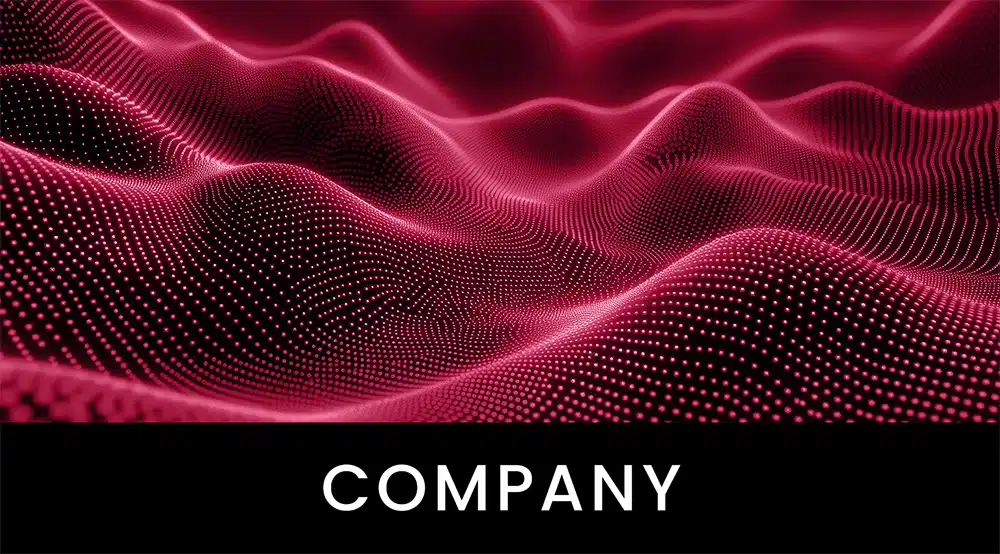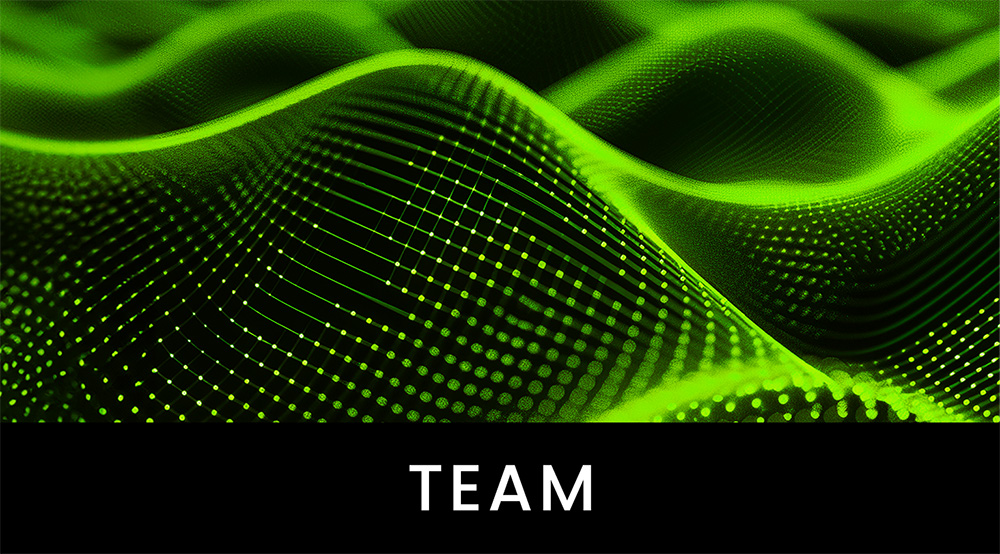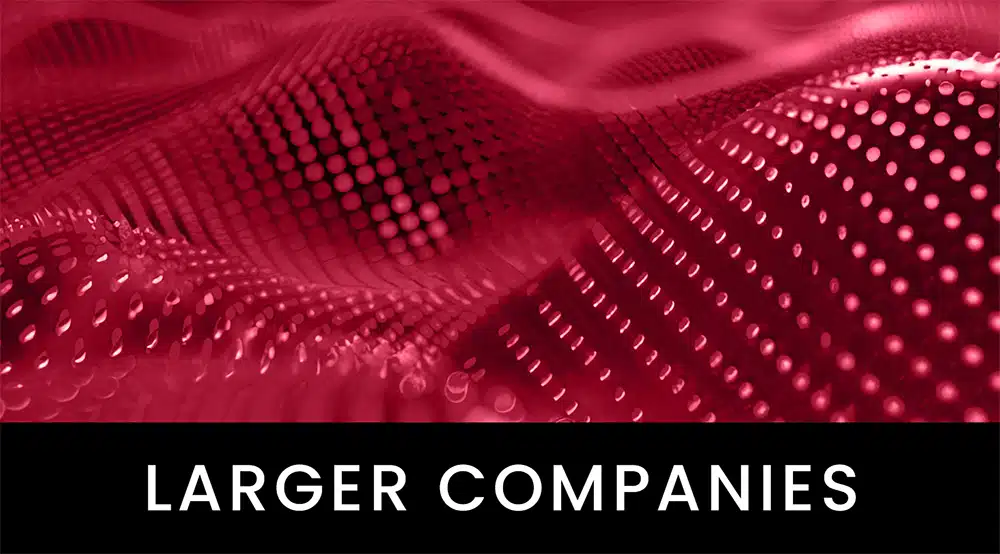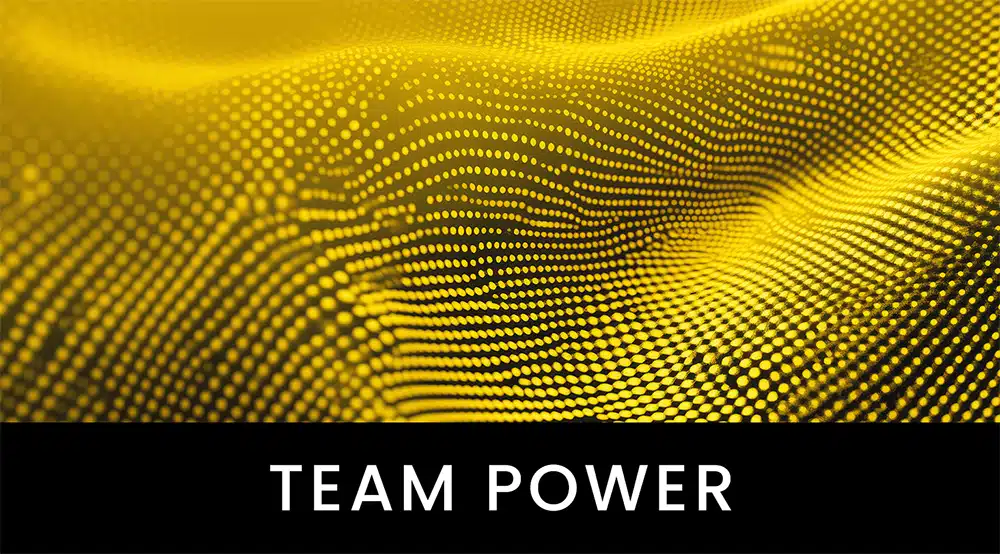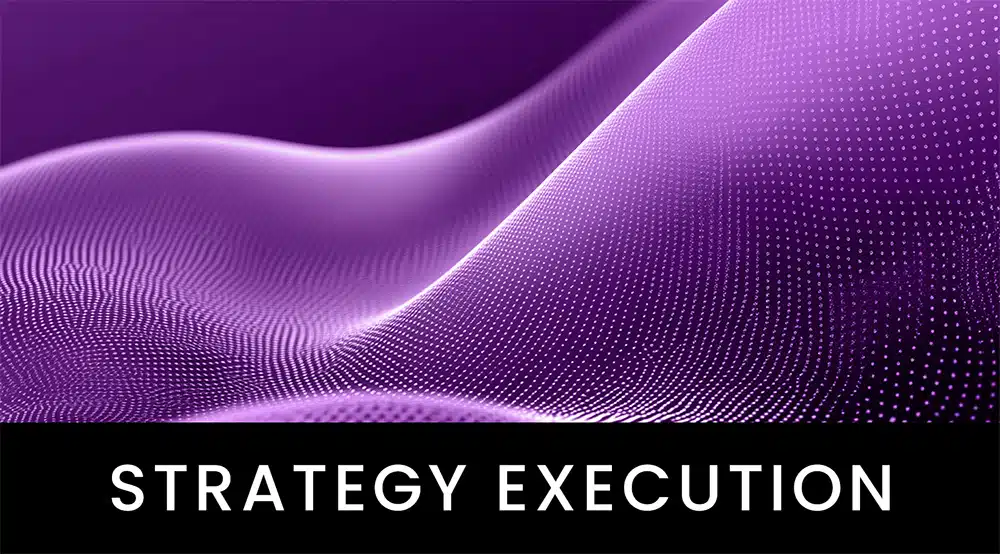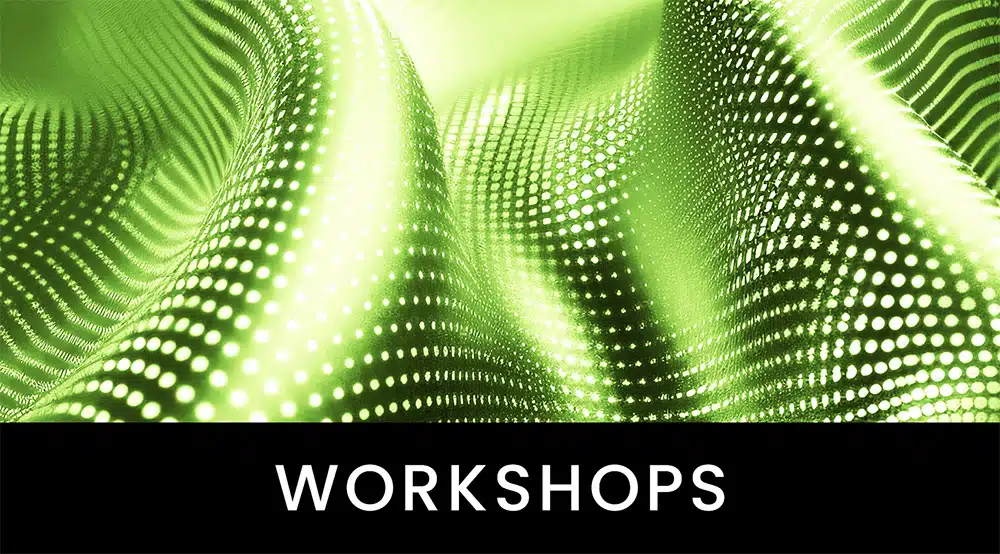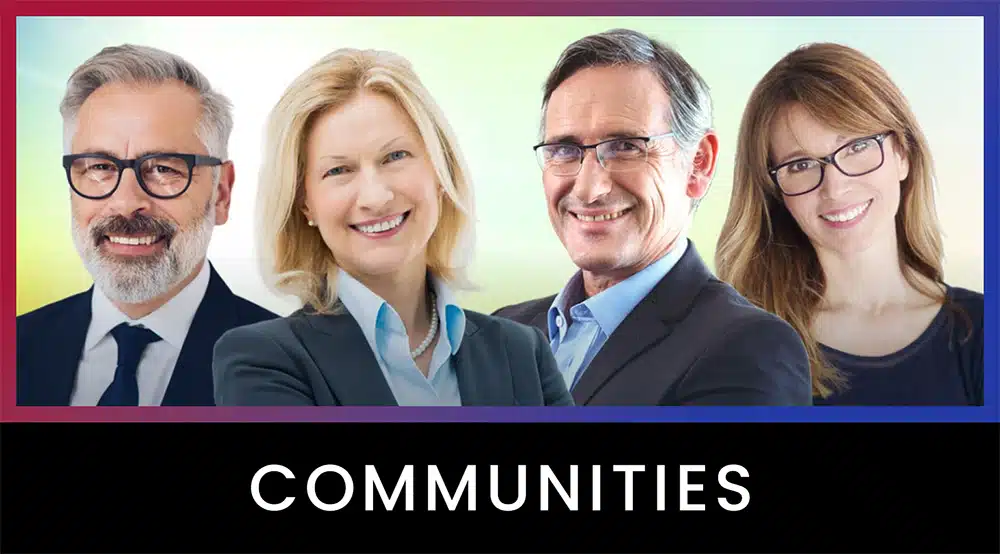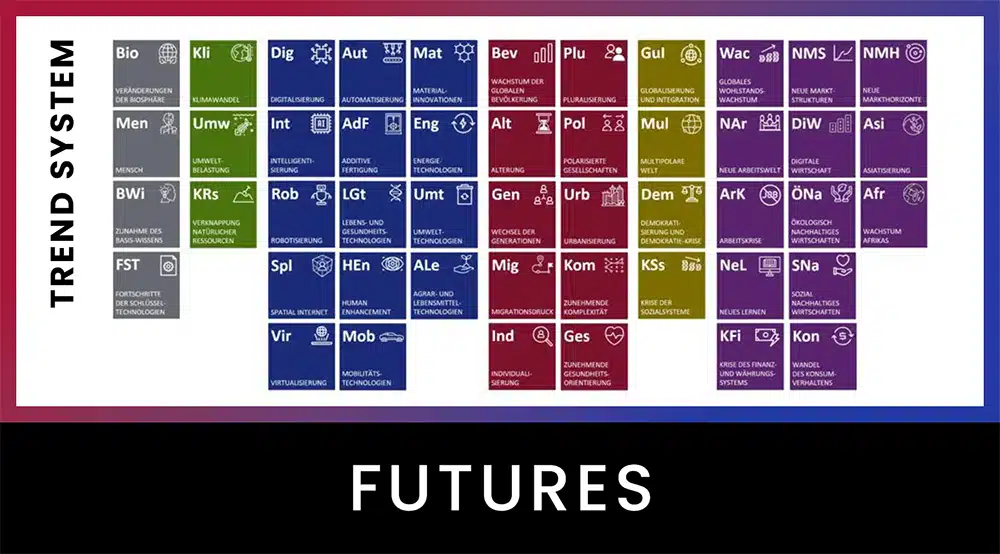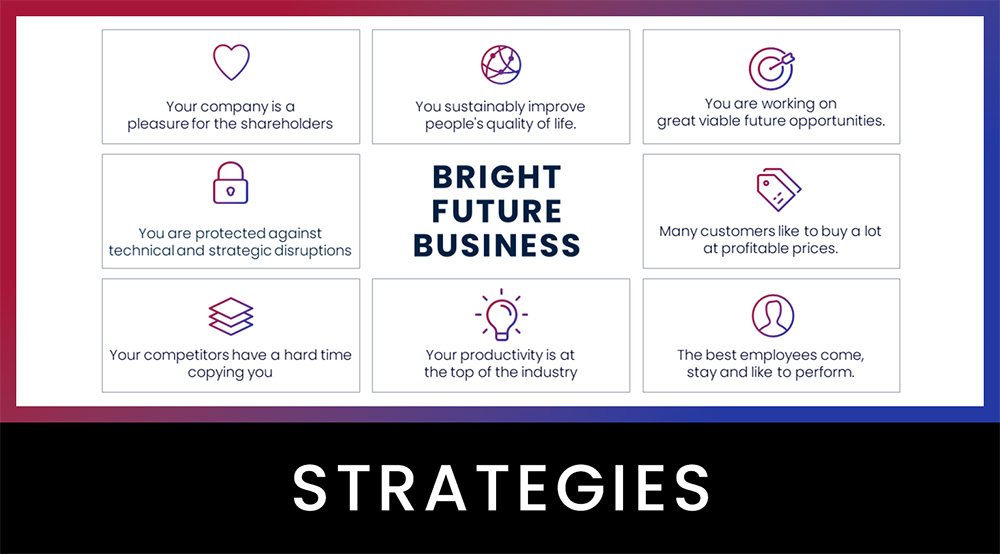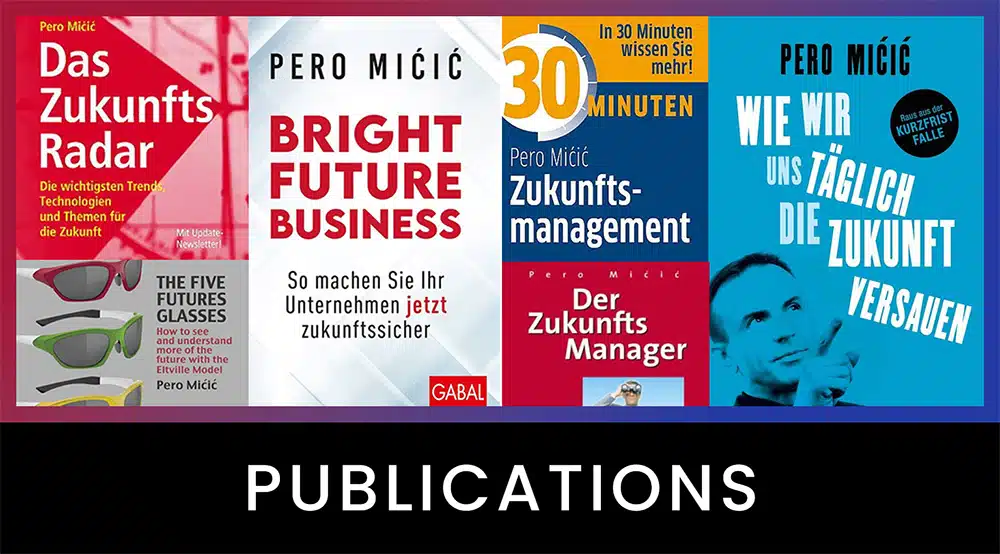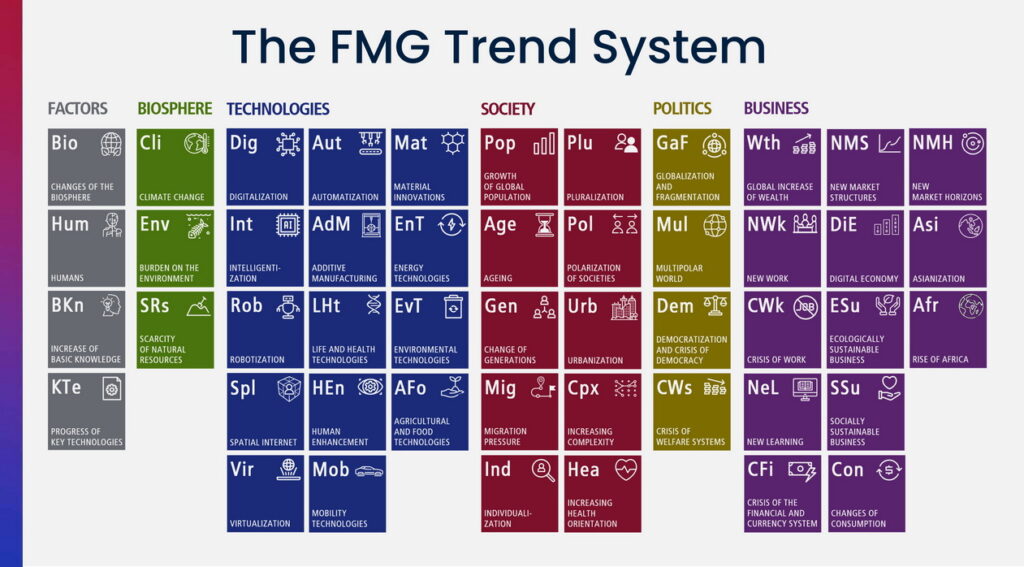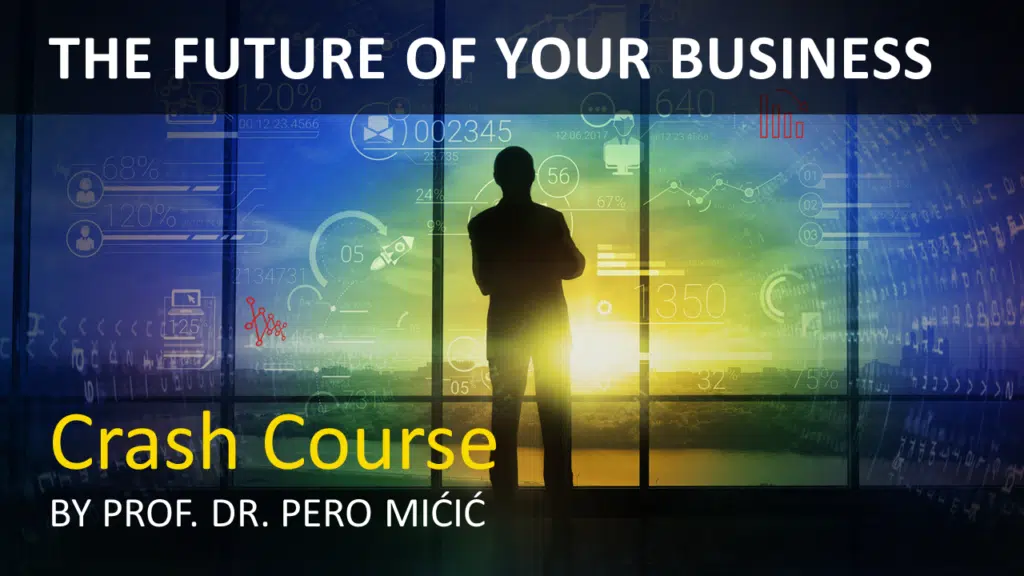Digitization strategy: In an interview with Simon Räbsamen (VBZ) and Enno Däneke (FMG), Dr. Pero Mićić explores how Zurich’s public transport operators have successfully geared up for a digital future.
Dr. Pero Mićić: You have successfully carried out two projects with FutureManagementGroup AG in the past. The first project focused on concrete opportunities and innovations for the infrastructure sector in particular. In the subsequent project, all digitization activities – from customer communication to infrastructure and operations to procurement – were to be aligned with a common vision through a clear strategy. As VBZ, you have a virtual monopoly in your field of business. So why are you dealing with the issues of digitization in the first place?
Simon Räbsamen: Whether you hold a monopoly position or not is completely irrelevant. With new disruptive business models and ideas, a monopoly position can disappear very quickly. With the help of digitization, we want to continue to develop and remain a leader in comparison with other providers of mobility services or other industries; today and in the future.
Enno Däneke: I agree. The recent past is full of examples of companies that have not dealt with surprising scenarios or have done so to an insufficient extent. In the mobility sector, new competitors are entering the market worldwide; Uber is just one example. Relying on the legislator in this regard can also quickly backfire. The liberalization of long-distance bus services in Germany in 2012 still poses major problems for Deutsche Bahn, the only provider to date.
PM: As a member of the management team, what new insights have you been able to gain about your employees, your business and your company?
RS: Basically, the high level of willingness, flexibility and mental capacity to get involved in the new digital topics and to work very actively.
Connected vehicles, intelligent infrastructure, information systems and autonomous driving can fundamentally change the way we are mobile.
ED: Digitization is also changing the shape of the markets. Connected vehicles, intelligent infrastructure, information systems and autonomous driving can fundamentally change the way we are mobile. In the future, the separation between individual transport and public transport is likely to be much blurrier than it is today. A study published in 2016 by the Swiss Federal Institute of Technology in Zurich estimates that one autonomous vehicle could replace up to ten conventional vehicles in the greater Zurich area. The average wait time for a vehicle to arrive in this simulation was just over three minutes, regardless of where one was located. Even with an allowance of 20 percent on all figures, this study shows the enormous potential of these technologies.
PM: Many aspects can be summed up under the term digitization. In very few cases do two people have the same idea of what digitization actually is and means. For one, it just means having a fast Internet connection, while the other is already talking about autonomous driving. How do you think the understanding of you and your employees on the subject of digitization has changed through the cooperation with FutureManagementGroup AG?
RS: Thanks to the support of FutureManagementGroup AG, we were able to gain a common understanding of digitization, especially in issues related to the future. Are we talking about tomorrow’s future? Of a month or of years? We definitely take the stance that digitization is more than just a fast Internet connection.
After all, the first step is to develop a shared understanding of what assumptions the management team and employees have about the future.
ED: After all, the first thing is to develop a common understanding of what assumptions the management team and the employees have about the future. Only then do you have the orientation you need to really evaluate opportunities and develop a strategy. In my eyes, VBZ has once again reinforced the realization that many technological possibilities come faster than is commonly thought. At the same time, however, political decision-making processes and regulations are sometimes surprisingly sluggish. Navigating this area of tension is a challenge, especially for a public company. At the same time, however, there are things that will probably not be much different decades from now than they are today, for example basic human needs such as security, self-determination, simplicity and social recognition. They will also strongly shape customer needs in the future. These constants are good anchors for alignment in a dynamic field like digitization.
PM: Many topics that are directly or indirectly related to digitization are discussed in public at regular intervals. Especially in social media, digitization is often perceived as a threat. How do you and your employees now perceive this issue after the two projects? (Opportunity or challenge?)
The biggest challenge: prioritize correctly
RS: In principle, digitization cannot be stopped. If you don’t actively address these issues, you may get steamrolled. This can become a threat. We want to be in the driver’s seat and actively engage with digitization; and we want to do so where it also brings us something. At the same time, this is also the biggest challenge: prioritizing correctly and actually implementing and telling about the successes.
ED: What is an opportunity for one company is a challenge for another. For example, autonomous vehicles are a huge opportunity for a transportation company, but a cab driver certainly sees the same issue very differently. It is important to recognize what is coming up, identify relevant aspects and prepare for it in the best possible way.
PM: You are now a member of the management team in a very specialized company. In terms of their structure and objectives, transport companies cannot be compared with private-sector companies. Were you not concerned that the results might not be actionable or might be too general?
If we cannot demonstrate measurable results and successes, employees will quickly ask themselves what “these digitization specialists” actually “bring”.
RS: In our workshops, we always made sure that the results and findings could be implemented very quickly. If we cannot demonstrate measurable results and successes, employees will quickly ask themselves what ‘these digitization specialists’ actually ‘bring’. In infrastructure, for example, we have only pursued digital ideas that can be implemented within three years.
PM: How would you describe the added value for your company that you gained from the two projects?
When I talk to my employees about “digitization” now, we have the same picture in our heads. We are also clear about the path we want to take to achieve this future.
RS: It can be said quite clearly that we have defined the terms ‘digitization’ and ‘future’ precisely for ourselves. When I talk to my employees about digitization now, we have the same picture in our heads. We are also clear about the path we want to take to achieve this future. Together, this has given us greater certainty of action. The future is now not quite so shrouded in fog.
ED: An old principle is: “Only those who have a goal can lead.” We always want to create a unified picture of this entrepreneurial future for our clients. If everyone within a team has a clear vision in mind and agrees on the path to get there, then they can focus entirely on implementation. This can significantly reduce the coordination effort, which is reflected in fewer or shorter team meetings, but also in faster decision-making processes and a more agile way of working.
PM: Can you give us a brief example of how you were able to implement the results from the projects?
Most important finding: build prototype, test, improve
RS: As an example, I would like to mention the smart point heating system. To date, we have turned on our point heaters as soon as the temperature dropped below 6°C, regardless of whether it rained or snowed afterwards. Now the point heaters at Meteodienst check when it’s freezing and when they need to turn on. This measure can save approx. 50 percent energy per switch heater. We have tested this with a prototype on our premises. Next winter, we will extend the prototype to a traffic junction and, if the results are good, we will consider a full rollout.
The most important lesson learned: build a prototype, test, improve, test and then roll it out – and don’t try to build a 100 percent perfect product first.
ED: In addition to the big, visionary ideas, it is also very important to discover such seemingly obvious ideas. This makes it possible to celebrate successes quickly and build energy and acceptance for the big leaps.
PM: What were the most important success factors in the implementation of the project?
RS: A very decisive success factor was the early involvement of all relevant decision-making groups. This increased the willingness to engage in a new approach. For us, it was an absolute novelty to work with a prototype, knowing full well that it will not be 100 percent perfect and that we cannot predict the results with certainty.
PM: Opportunities, visions, future factors – at first glance, that sounds like looking into a crystal ball. How did they perceive the way FutureManagementGroup AG works?
RS: Very structured, thoughtful, comprehensible and challenging. There was room for ‘fancy ideas’. But it also always became very concrete and binding.
PM: And for your employees? Did it take a lot of convincing?
RS: Culture dictates the implementation success of these digital innovations and strategies. In my opinion, it is very important that this approach is demanded and exemplified by top management. Fortunately, our employees are open to these ideas and see it as an opportunity. Therefore, it did not take much convincing.
Dr. Pero Mićić is internationally regarded as a leading expert in future management. He is a board member of FutureManagementGroup AG, whose mission is to help top decision-makers in business, politics and government see more of the future than their competitors.
Simon Räbsamen is Head of Infrastructure and a member of the Executive Board of Verkehrsbetriebe Zürich. The Infrastructure business sector enables the excellent infrastructure with innovation and sustainability and thus makes a significant contribution to the implementation of the corporate vision.
Enno Däneke is Managing Partner at FutureManagementGroup AG. He serves clients in the mobility and logistics industries. He supports leadership teams in developing a motivating vision and future-robust strategy.

